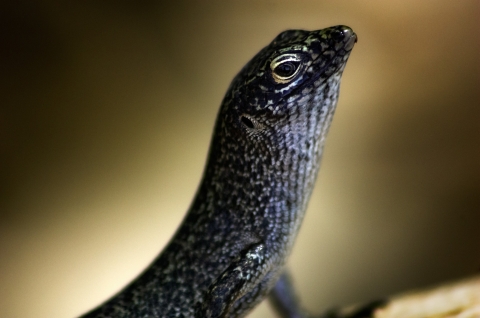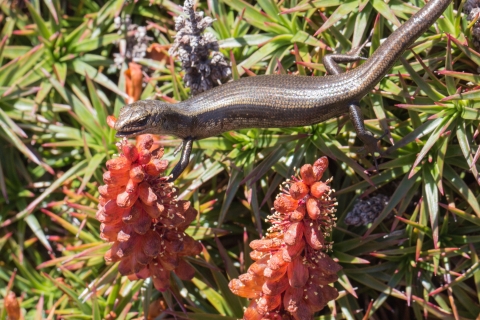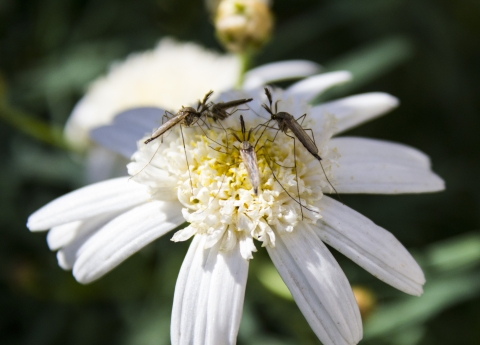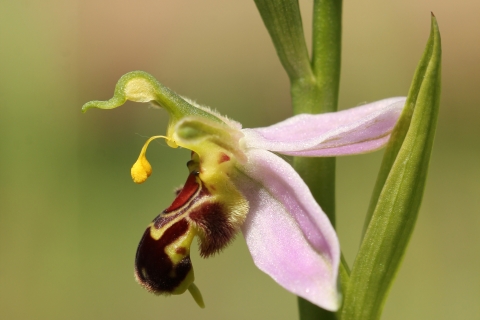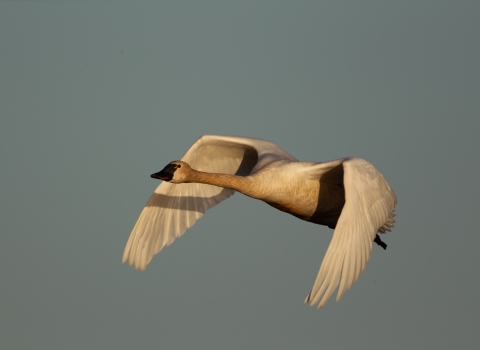While we love butterflies, bees, hummingbirds and bats, some pollinators might feel a little sad that they are not better known. But now is their moment of glory! We want to celebrate some of these unique species and help broaden the pollination conversation.
Lizards, geckos and skinks
One pollinator you may not know about is Brazil’s Noronha skink, which drinks the nectar of the flowers of the mulungu tree and gets pollen on its scales. It then transports the pollen to other flowers. Scientists who studied pollination relationships between 37 species of lizards believe that most pollination relationships between them and plants take place on islands, suggesting that there are some unique ecological or evolutionary factors that make these relationships possible in isolated locations.
In Tasmania, a snow skink only found there seems to have a visible co-evolutionary relationship with Richea scoparia plants. It is only after the skinks tear off part of the flower and eat them that insects can access the parts of the flowers used for pollination.
Tiny crustaceans
In a study published in 2016, scientists discovered how tiny crustaceans in the ocean helped pollinate seagrasses, which are flowering plants. Bet you didn’t see that coming! Just like on land, the scientists believe that the crustaceans move from plant to plant, getting pollen on their bodies which they then transport such that pollination can occur.
Cockroaches
Yes, cockroaches! Are you excited? While it’s admittedly a new area of research, pollination relationships between cockroaches and plants were discovered in three countries around the world, with the latest being in Chile.
Mosquitoes
Not all mosquitoes feed on blood. Only the females feed on blood, and only when they are producing eggs. Male mosquitoes feed exclusively on plant nectar, sometimes serving as vectors for pollen transmission.
The self-pollinators
Who needs a friend when you can pollinate yourself? Actually, we DO like having friends. But some species such as the bee orchid, which is found predominantly in Europe, can move their reproductive parts to self-pollinate when the conditions make it necessary.
Even MORE unsung heroes of pollination are out there!
While we think we’ve helped shine the light on some new animals to think about when it comes to pollination, there are still quite a lot more unsung heroes. For instance, a large variety of insects like ants, beetles, moths, and even spiders are pollinators. Some mammals also lend a hand (or paw), including lemurs, rodents, mongooses, and honey possums–which might have one of the best animal names of all time.
Check out more unusual pollinators from the U.S. Forest Service.

